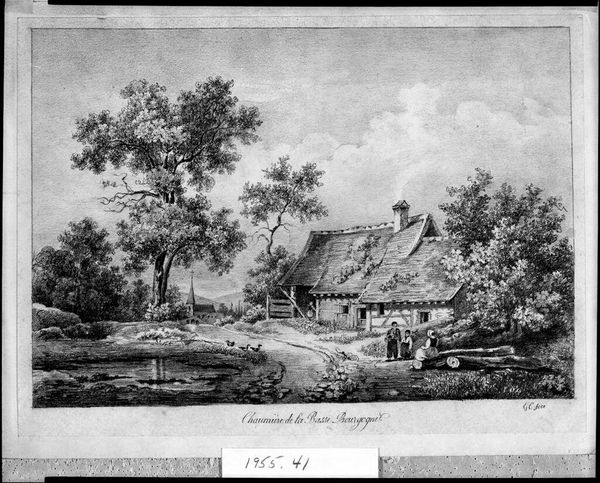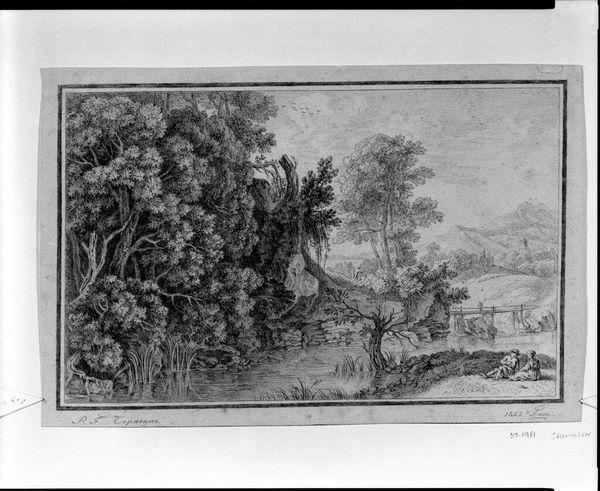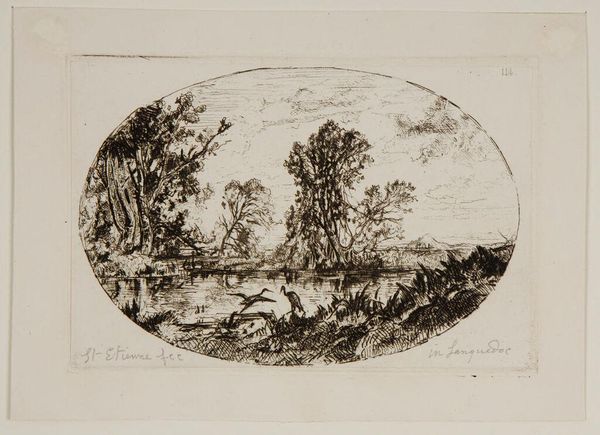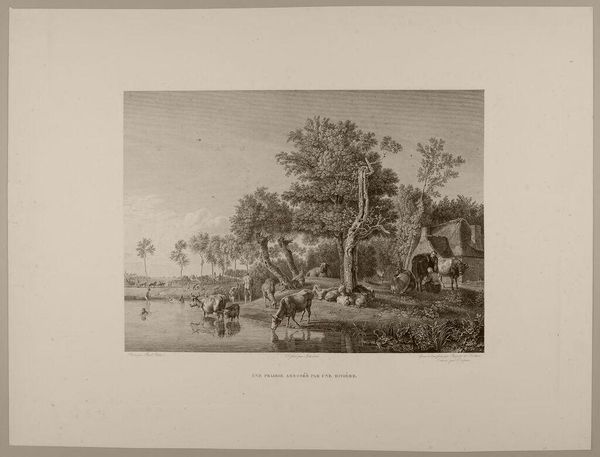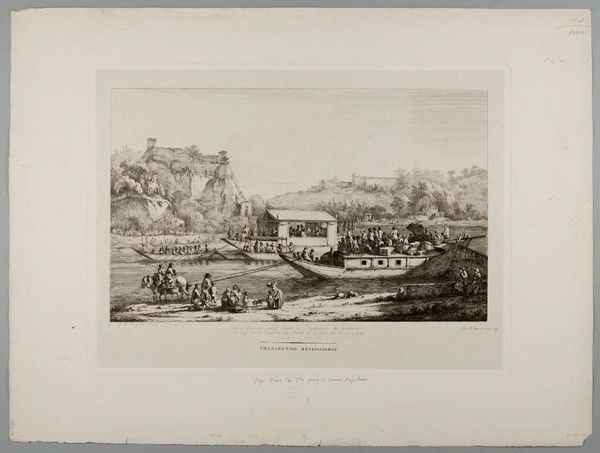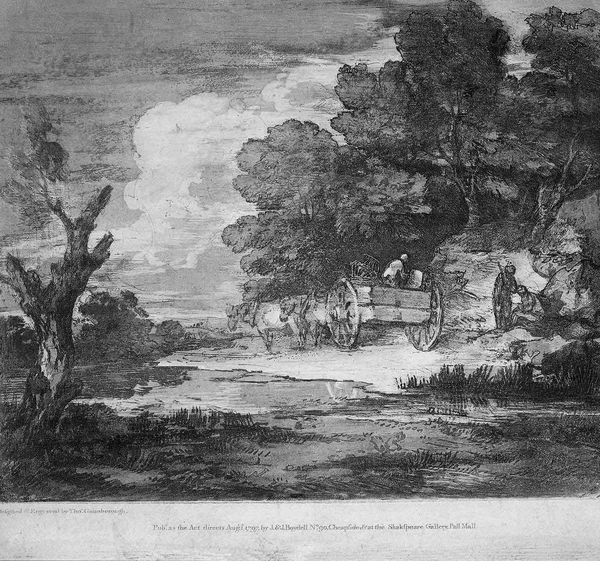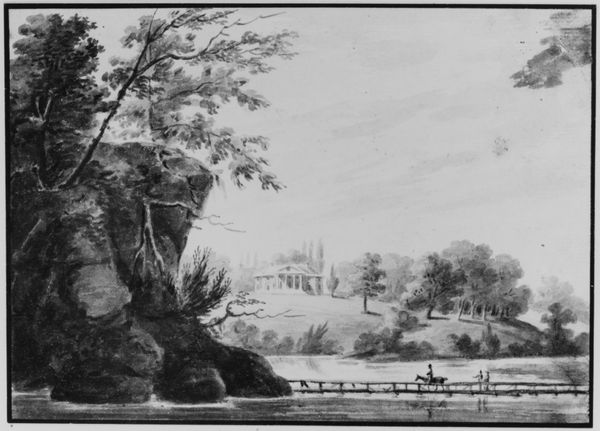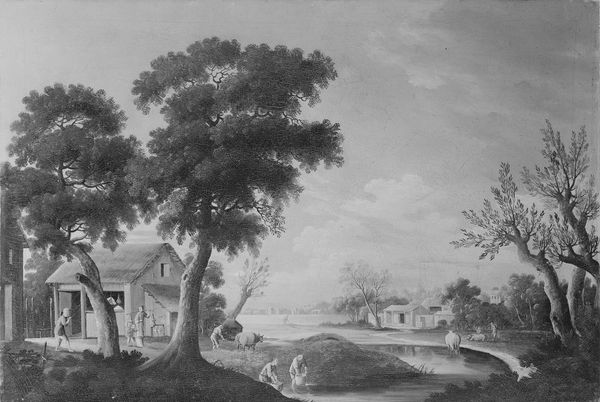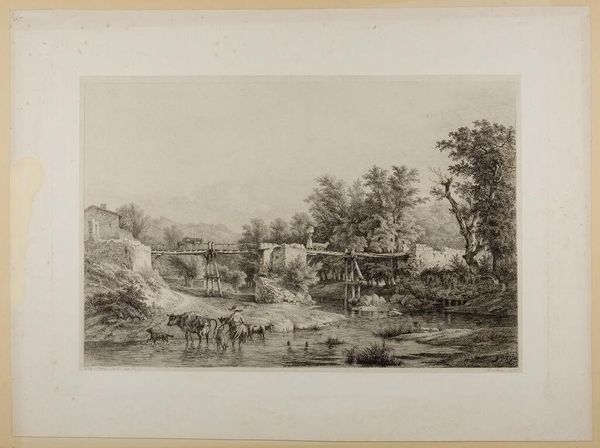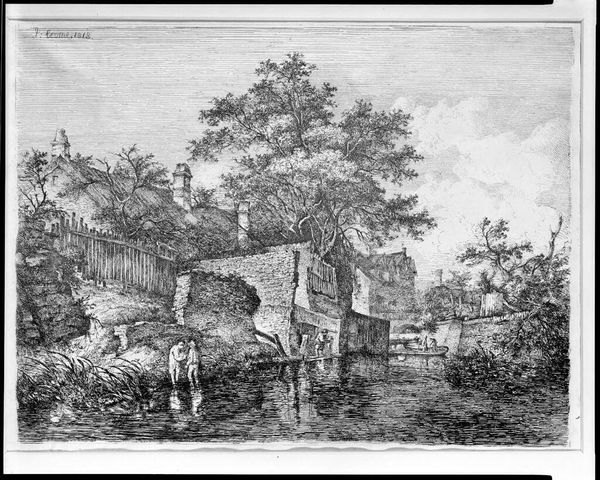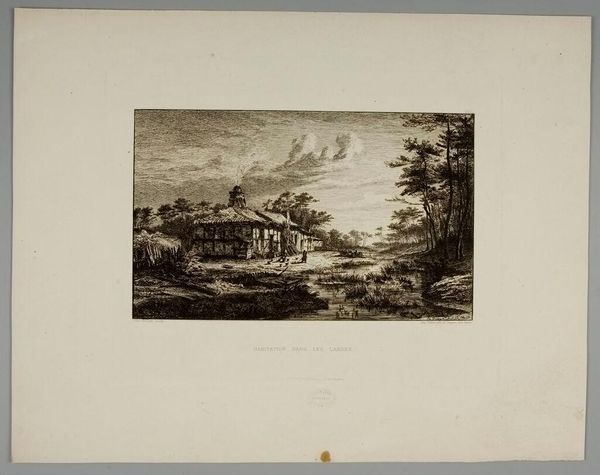
painting, print, ceramic
#
painting
# print
#
sculpture
#
landscape
#
ceramic
#
stoneware
#
england
#
romanticism
#
orientalism
#
genre-painting
#
decorative-art
Dimensions: 9 3/4 x 11 7/8 in. (24.8 x 30.2 cm)
Copyright: Public Domain
Curator: Welcome! Here we have an English stoneware dish, created sometime between 1828 and 1838 by Job and John Jackson. Notice the transfer-printed scene nestled in the center. Editor: It feels like looking at a memory. The monochrome image has a quiet melancholy about it, almost sepia-toned even though it isn't. The elaborate floral border is at odds with the industrial landscape, giving the piece a jarring feeling. Curator: Precisely. The dish itself, its form and the transfer printing method, speaks to the burgeoning industrialization of the pottery industry at the time. Think about the social context: The rise of the middle class and their demand for affordable, decorative objects. Transfer printing allowed for mass production. Editor: And it wasn’t just any decoration; it's a Romanticized industrial scene. A factory billows smoke in an otherwise picturesque, leisure-filled landscape complete with boating figures, and the fashionable border is full of idealized flora. It normalizes and almost glorifies industrial expansion at a time of profound social and environmental upheaval. This speaks volumes about societal values being literally consumed and displayed. Curator: Absolutely, consider the material realities. This stoneware dish isn’t just an aesthetic object. It's the product of complex labor relations, global trade networks, and evolving technologies. The act of transfer printing itself – transferring an engraved image onto ceramic – represents a significant shift in production. Editor: Yes, but who is this bucolic factory landscape really serving? Certainly not the workers whose labor funded its production, and whose communities likely experienced industrial displacement. It is not simply a lovely decoration; the “romantic” view papers over lived experiences, furthering class disparities. Curator: And, in a way, we're continuing that cycle of consumption. We engage with the image on a screen, considering it from our contemporary vantage point. Editor: True. Examining this seemingly simple dish offers a chance to challenge those historical narratives. To really question what "progress" signifies when its benefits are unequally distributed. Curator: It makes me consider the distance – in terms of both time and privilege – between those who produced the dish and its initial consumers, and then also between us now. Editor: Yes, by unpacking the imagery, the materials, the methods of production we also have an opportunity to really investigate our own positions and complicities.
Comments
No comments
Be the first to comment and join the conversation on the ultimate creative platform.

